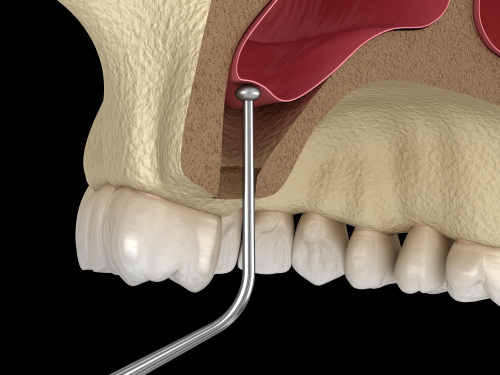You’re sitting in the dental chair, trying to follow the conversation, when a term drops into the room like a lead balloon: sinus lift. You pause. Maybe you nod, perhaps you don’t. But inside, the questions flare up. A lift? In your sinuses? What does that even mean? Do you really need one? And if you do—are there other options? This is where uncertainty starts to creep in. Not because the procedure is frightening but because the words land without context. And that gap between what’s said and what’s understood? It adds stress.
A sinus lift isn’t something every patient will need. But when it’s brought up, it usually signals something important: a question about bone support and whether your upper jaw can hold an implant securely. That conversation matters. So do the alternatives. We’re here to lay all of that out—clearly, directly, and without adding to the noise. Because when you’re making decisions about your health, you deserve real answers.
What Is a Sinus Lift?
A sinus lift is a surgical procedure that creates more vertical bone height in the upper jaw so we can securely place a dental implant. It’s most often needed in the back of the mouth, where the upper molars used to live and where the maxillary sinuses sit just above the jawbone.
Here’s the challenge: when a tooth is lost in this area, the bone underneath doesn’t just stay put. Over time, it starts to shrink—a natural process called bone resorption. On top of that, the sinus cavity may slowly expand downward into the space where the bone used to be. As a result, you may not have enough bone height to safely anchor an implant.
By gently raising the sinus membrane and placing bone graft material beneath it, the procedure creates the space and structure needed to support an implant. It’s not about altering the sinuses themselves—it’s about rebuilding the bone that once supported your teeth.
Direct Sinus Lift
This method is used when you’ve lost a significant amount of bone. Dr. Apel creates a small opening in the side of the upper jaw to access the sinus directly. From there, he carefully lifts the sinus membrane lining and places graft material beneath it to build up the area. After healing, this newly added bone will be ready to hold an implant.
Indirect Sinus Lift
If you still have a decent amount of bone left—just not quite enough—Dr. Apel may go through the top of the jawbone at the future implant site. Using specialized instruments, he will gently raise the sinus floor from below. In some cases, the implant can even be placed simultaneously. This method is less invasive and often comes with a shorter recovery period.
When Sinus Lifts and Bone Grafts Aren’t an Option
While sinus lifts and bone grafts are useful tools in implant dentistry, they’re not always the right choice for everyone. For some patients, especially older adults or those with underlying health conditions, the risks of invasive surgery outweigh the potential benefits.
Extensive oral surgery can place serious stress on the body. Healing takes time, recovery can be uncomfortable, and for patients with compromised health, complications can quickly become serious—or even life-threatening. In these cases, the priority shifts. The goal becomes clear: minimize surgical stress, reduce healing time, and avoid complications altogether.
Conventional dental implants are typically about 5 millimeters in diameter. That size requires a solid foundation of bone to hold the implant in place and allow for proper integration. If there isn’t enough bone height or width in the upper jaw, especially near the sinus cavity, additional procedures—like sinus lifts or bone grafts—are often recommended to build out the structure needed for placement. But what happens when that approach isn’t possible?
Mini Dental Implants: Rethinking What’s Possible
Mini dental implants give patients a new path forward—especially those who have been told they don’t have enough bone for traditional implants. Dr. Apel places these narrow-diameter implants in areas of reduced bone volume where conventional implants might not be an option.
Traditional implants often require sinus lifts or bone grafts. On the other hand, mini implants can fit securely into the existing bone without preparatory procedures. Their slim structure allows for strong initial stability, which often makes it possible to avoid additional surgical procedures altogether.
For years, many clinicians avoided placing mini implants in the back of the mouth, concerned they wouldn’t hold up under chewing forces. However, research has challenged that belief. Today, narrow-diameter implants placed in the posterior jaw show high success and survival rates—even in areas once considered off-limits.
This shift opens the door to implant care for patients previously told it wasn’t possible. It means fewer procedures, faster healing, and reliable, long-lasting results.
There’s More Than One Way To Restore Your Smile
If you’ve been told you might need a sinus lift—or if you’ve been told you aren’t a candidate for dental implants at all—it’s time for a second look. At Designing Smiles Dentistry, we offer advanced options, including mini dental implants, that are changing what’s possible for patients with bone loss or health limitations.
You don’t need to navigate this alone or stay stuck in uncertainty. Schedule a free consultation with Dr. Apel to determine what’s right for you.
From mini implants to full smile solutions, we always share helpful content—stay connected on Facebook and Instagram.

